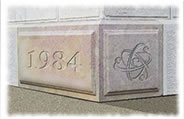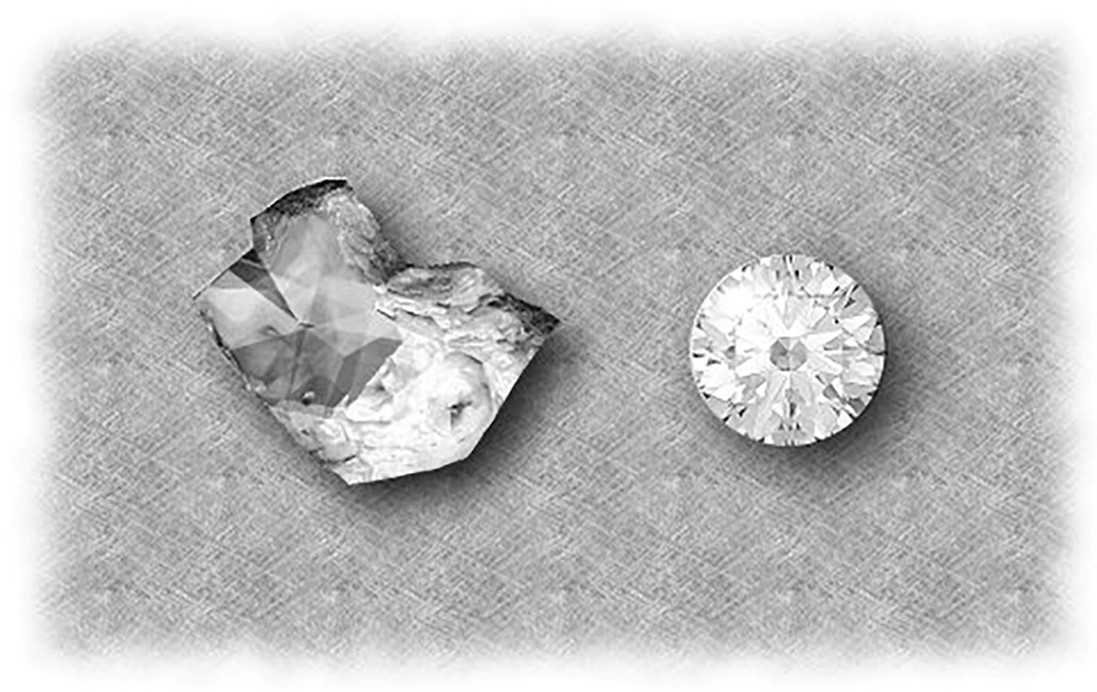What a Story!
“A diamond is forever!” — De Beers Corporation
I was sitting in an agency conference room in the late 70’s, enjoying lunch and the view of Central Park as my clients discussed their work for De Beers. In the course of the discussion, it became clear the “Diamond Engagement Ring as a Symbol of Undying Love” was actually the subject of a large and sustained advertising effort not only in North America, but around the world.
It was a little bit of a shock… I had grown up with Engagement Rings as part of the “Cultural Wallpaper,” like Santa Claus and the Easter Bunny. Some things were accepted without question. I felt the world shudder a bit as something I thought was forever turned out to be a plan to sell more diamonds.
“Fiction” is a work of imagination. A created point of view. A narrative. A Story. A point of view created to satisfy a need, sell a product, entertain, teach a lesson, disseminate a perspective, or distract from things as they actually are. We say “fiction” because even if you are personally present to witness an event taking place, the stories you subsequently tell about it are — by the very nature of re-telling — abstractions. That event may actually have happened, but the stories you create and tell about it will have alterations, edits, pauses, and personal emphases — all of which distinguish fiction from the truth of experience.
The event may have happened, but the story — one step removed — is fiction. Two people witnessed the same event. Each describes it later uniquely and differently. Both accounts are false — because neither gets it just the way it was.
Fiction — Story — is a fundamental part of our culture. Story and Culture go hand in hand. Story as a cultural component is mostly unnoticed and unremarked although it’s as omnipresent as wallpaper. Its unquestioned presence is a constant influence beneath the threshold of awareness. Certain fictions sell Products. Others sell Points of View. Culture as a whole — is a created thing, which serves a purpose, if only to keep the traffic from snarling.
I began to wonder, after that enlightening lunch, just how much of culture is created and how much is “God Given,” and if it’s all created, all a dream, maybe dreamed by De Beers or Caesar, perhaps Augustine or Jefferson, Buddha, or King Henry. I gradually arrived at the conclusion that “We are, Each of Us — Culture Creators” — in the sense that each of us creates the stories (and hence, the universe) in which we live. The shared universe is a combination of our stories and dreams + everybody else’s. I had bought the Story of the Ring long before an actual ring was ever discussed.
Before you get nervous about the greater implications consider this: The stories are our creations, and they’re important. They sell products, they lubricate industries, they form the boundaries of our individual universe(s). They entertain and inspire. They keep us in our appointed places, or they can be created by us and ease our passage to new continents, new nations, and economic, social, and spiritual universes. They can encourage us to knock down walls and build new empires or to remain inside the story walls we know…
Stories are creations which build upon each other. When you buy the ring, you also buy a story and perhaps purchase the higher quality retail experience — which leads into another related story — and the more inflated self-image that comes with it.
That church — is a bundle of stories. So is that political party. That war — lots of stories! So too that city, which has eight million stories. That race, that nation, that car, that company, that suit, that suburb, that wine and that theatrical production. See, it’s all there in The Times, The Globe & Mail, The Monitor, The Star, The Post, People’s Daily, The Standard, The Sun… All the stories!
Life is a Story. But if everything other than pure experience is a story, what’s important? Well, that’s up to you! This isn’t an existential stage play. You’re not alone here. In a world with other people, there are lots of stories, lots of competing interests and intentions. You get to choose the ones to which you’ll pay attention. It’s a marketplace.
Stories are “Packaged Intentionality” — they serve a purpose. (Perhaps selling more De Beers Diamonds.) Each story has a thrust, an underlying intention, an implied value system — an originating universe from which it emerges. When you “pay attention,” you are giving the story and the teller, your attention — (and your time, your allegiance, your money, your faith and perhaps those of your children and family)!
That attention has great value, and there is fierce competition for it. Stories about the nature of creation, or national identity, about what constitutes beauty, about how you should spend your time and hence your life, about what’s important, things that you should have or aspire to, ways of living, appearing, and interacting.
All these diverse points of view (and their representative stories) are out there in the arena competing for your interest, allegiance, and adoption. Once you adopt a story, it becomes part of the wallpaper of your personal universe, and you probably stop thinking about it. For example, that diamond story, which seeps into your consciousness and influences your thinking, behavior, and decisions. The stories become who you are. And you begin to think that they are TRUE, IMPORTANT, IMMUTABLE and FIXED — not just stories…
What does this all mean for you?
You are an originator, composer, actor, and storyteller, not a mere consumer! (But you may not think of yourself that way.) The stories you adopt, create, and tell — to and about yourself — are the tools you use to create your own life experience. First you tell it to yourself, then to others, and when they start repeating it in the marketplace — you’re in! That’s a version of life that rarely gets a fair telling. “If it were easy, everyone would be doing it!” you say… But Everyone isdoing it (either well, or poorly). That’s how it’s done.
Before you buy the thing, ask yourself if you’ve already bought the story.
Applications
1. Personally
What story are you living? Are you happy with it? What parts would you change if you could? Can’t you? Shouldn’t you? Will you? Sometimes when we stop to think, we realize that the story we tell to ourselves about ourselves is not complimentary, or supportive. Maybe we’ve internalized a critical teacher, classmate, or sibling — and that story we’ve been listening to, has been doing us in — all along. As Editor in Chief of your own Story, henceforth YOU decide the headlines and the details! Call for Re-Write and get out a new Late Edition!
2. At Home
That’s where we learn this process — as passive consumers of stories from the culture, the community and the family OR as active composers and disseminators of our own material! Active or Passive? It’s up to you as an individual, but also as a parent or partner. Are you going to read about it, or are you going to write, then live your story and teach, motivate, critique, and lead your family to write the stories of their lives?
3. At Work
Lots of stories competing for shelf space inside and fighting for access to the outside market. Only the strong survive! A strong story is focused like a laser on the benefit to everyone it touches. It must serve the customer, the seller, the marketplace, and the manufacturer. In the great ethical test, the product and the story must serve all stakeholders. Then it must be concise, memorable, and repeatable — to get passed along. If we build repeatable stories, we do service! Finally, the best stories have a hook, a style, a uniqueness, and cool factor that make them fun. Be the best editor/storyteller in the office and watch your career bloom!
Been engaged? Was a ring involved? De Beers! What a story!
Dessert:
Subscribe to our Newsletter


